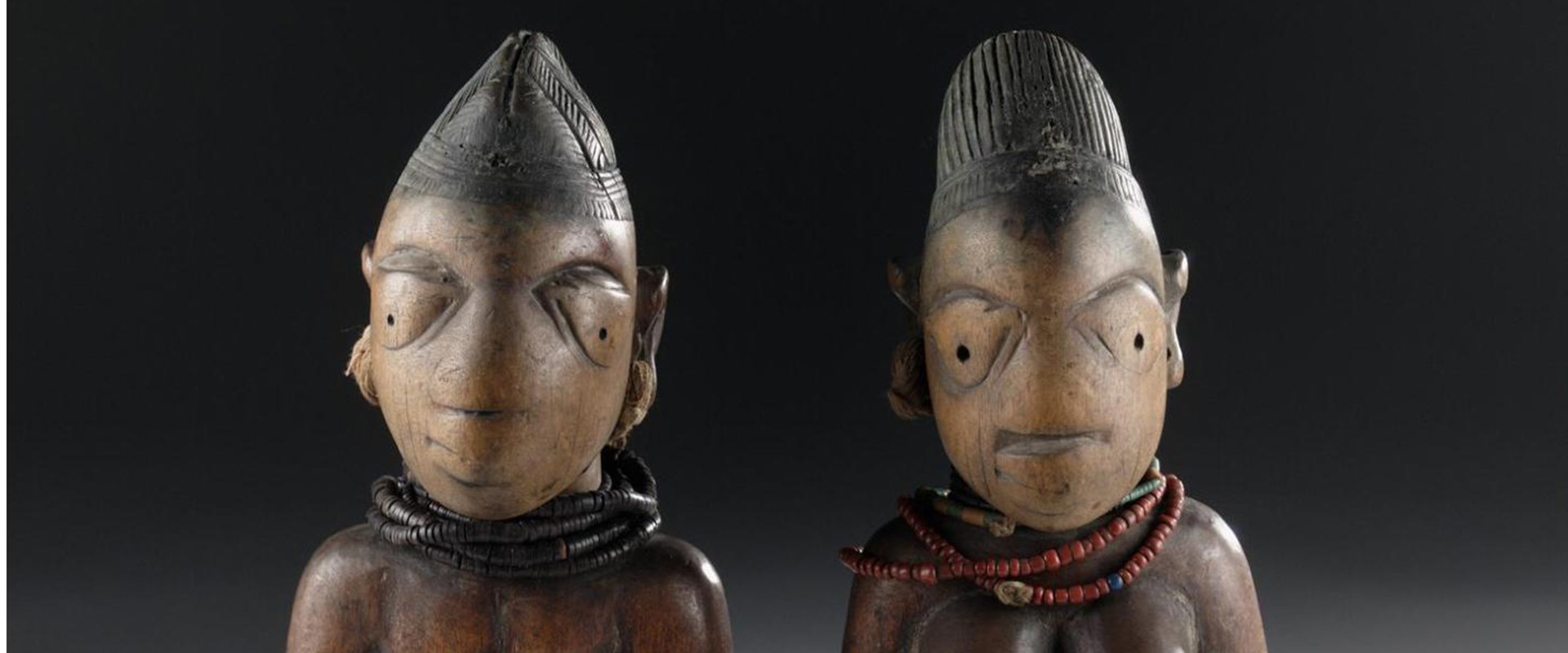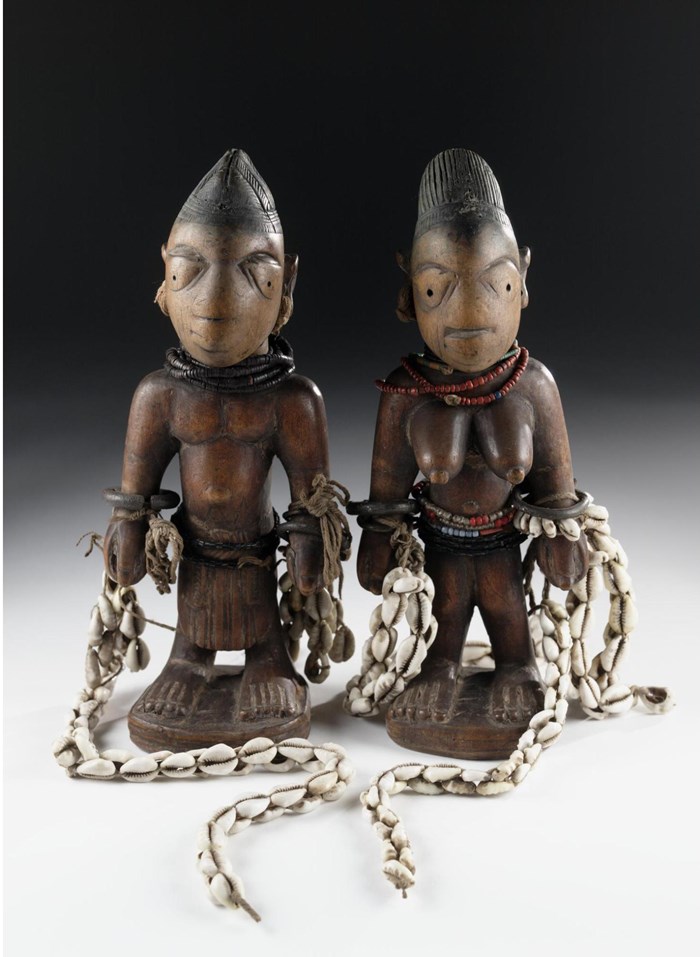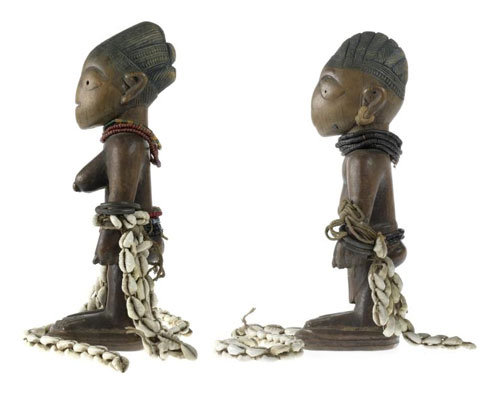Key in a search term below to search our website.
Key in a search term below to search our website.

These carved wooden sculptures from West Africa represent the souls of deceased twins.
Made in
South-western Nigeria
Made from
Carved wood with attached personal ornaments including glass bead necklaces and girdles, metal armlets and strings of cowries attached from the wrists
Height
25cm
Museum reference
On display
Patterns of Life, Level 1, National Museum of Scotland
Did you know?
In Yoruba culture, a first born twin is traditionally named Taiwo, meaning ‘having the first taste of the world’, and the second Kehinde, which means ‘arriving after the other’.

The Yoruba people of Nigeria, West Africa have one of the highest birth rate of twins in the world, with 45 of every 1,000 children born a twin, but also have a high mortality rate. In Yoruba culture, twins are considered to possess special powers: they are believed to be one soul, and must be cared for accordingly. If a twin dies in infancy, the family have a wooden figure carved to represent the dead twin.
These carvings are called ere ibeji (‘ere’ means sacred image, ‘ibi’, means born and ‘eji’ means two). The family look after this figure as if it were alive: feeding, bathing, clothing, carrying it like a baby, and performing rituals on significant occasions, to ensure the balance of the shared soul. These figures show evidence of the years of attention and care they have been given, their facial features worn smooth with the handling they have received.

Yoruba carving has a number of characteristics including the shape of head and elaborate conical hairstyle which represent ideals of Yoruba beauty. These distinctive small standing figures are carved to portray the twin in adult form, and the sculptures may be dyed, or decorated with shells, glass beads and metal to enhance their status.
The elaborate style and beauty of the carvings are influenced by the powerful artistic and cultural traditions of the Kingdom of Benin, which flourished in southwest Nigeria between the 13th and 19th centuries. Today mothers will also use commercially produced plastic dolls in place of the wooden ere ibeji.
There are several ere ibeji sculptures in the African collections at National Museums Scotland. You can see a selection in the slideshow below and in our collections search.